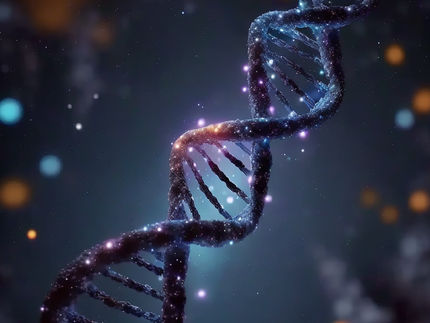RAD-tagging technology is demystifying genome sequencing
University of Oregon researchers document how their technique quickly puts a genome together
Take millions of puzzle pieces containing partial words and put them back together into full words, sentences, paragraphs and chapters until the book these random parts came from is rebuilt.
That daunting process in not unlike sequencing an organism's genome, says University of Oregon biologist Eric A. Johnson, a member of the UO Institute of Molecular Biology. His lab developed a patent-pending technology for discovering differences between genomes called restriction-site associated DNA markers, or RAD. They have now shown that RAD can also be used to help put a genome sequence together.
The original RAD technique, unveiled in 2005, led to the UO spinoff company Floragenex, which uses the technology in plant genetics. More recently, Johnson and UO colleague William A. Cresko used it to identify genetic differences in threespine stickleback, a fish, which evolved separately after environmental conditions had isolated some of the saltwater fish into freshwater habitats.
Now, after three years of research, adapting it along the way as sequencing tools advanced, Johnson, Cresko and three UO colleagues provide a proof-of-principle paper in the April issue of PLoS One, a publication of the Public Library of Science. The National Institutes of Health-funded research documents that the new method, called RAD paired-end contigs, works and provides accurate sequencing results.
"The RAD sequence is a placeholder that identifies one small region of a genome," Johnson said. "We showed that this technique lets us gather together appropriate nearby sequences and piece them together." In just seconds, a section is completed, he said. In a matter of hours, he added, an entire genome's sequence emerges.
Using the book analogy, Johnson said: "We first asked if we can piece together one short sentence at a time instead of ordering all the words in the whole book at once. Next, can we put together one paragraph at a time? That's like going from, say, 1,000 letters of the genome in a row to 5,000 at a time. Here, we show that we can do this. We can put the book back together."
A RAD marker in the book analogy might be a word at the start of each sentence. Using that marker as an anchor, the rest of the words in the sentence are easily separated from all the words in the book, and then the words in the sentence are put in the right order, on an on until all the content is organized correctly, Johnson said. The end product, he added, contains few, if any, leftover or unexplained fragments, a problem occurring with current technologies that rely on clusters of computers, requiring extensive memory, to complete sequencing projects.
RAD technology can be applied to study the genetics of organisms for which genomes have not been completed, Johnson said.
The PLoS One paper detailed how RAD works on stickleback and the bacterium e-coli. Both involve small and rather simple genomes. There already is interest in its potential application in human genome sequencing, Johnson said.
Most read news
Other news from the department science

Get the analytics and lab tech industry in your inbox
By submitting this form you agree that LUMITOS AG will send you the newsletter(s) selected above by email. Your data will not be passed on to third parties. Your data will be stored and processed in accordance with our data protection regulations. LUMITOS may contact you by email for the purpose of advertising or market and opinion surveys. You can revoke your consent at any time without giving reasons to LUMITOS AG, Ernst-Augustin-Str. 2, 12489 Berlin, Germany or by e-mail at revoke@lumitos.com with effect for the future. In addition, each email contains a link to unsubscribe from the corresponding newsletter.





















































